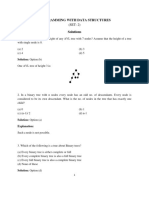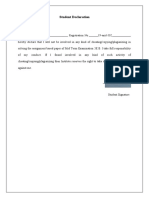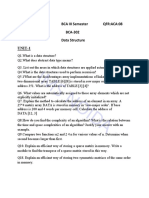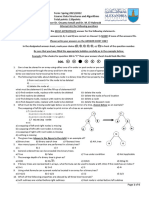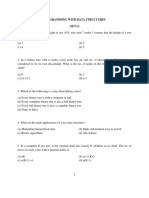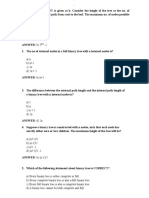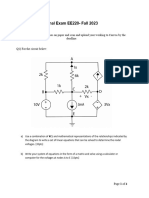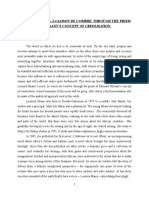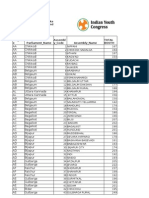0% found this document useful (0 votes)
96 views3 pagesPractice Coding Questions DSA-ST-3
This document contains 20 coding questions on data structures and algorithms. The questions cover topics like arrays, linked lists, trees, and graphs. They involve problems like finding the maximum height of a binary tree, constructing a balanced BST from an array, calculating the diameter of a binary tree, and more.
Uploaded by
vishwashbharti2Copyright
© © All Rights Reserved
We take content rights seriously. If you suspect this is your content, claim it here.
Available Formats
Download as PDF, TXT or read online on Scribd
0% found this document useful (0 votes)
96 views3 pagesPractice Coding Questions DSA-ST-3
This document contains 20 coding questions on data structures and algorithms. The questions cover topics like arrays, linked lists, trees, and graphs. They involve problems like finding the maximum height of a binary tree, constructing a balanced BST from an array, calculating the diameter of a binary tree, and more.
Uploaded by
vishwashbharti2Copyright
© © All Rights Reserved
We take content rights seriously. If you suspect this is your content, claim it here.
Available Formats
Download as PDF, TXT or read online on Scribd
/ 3











